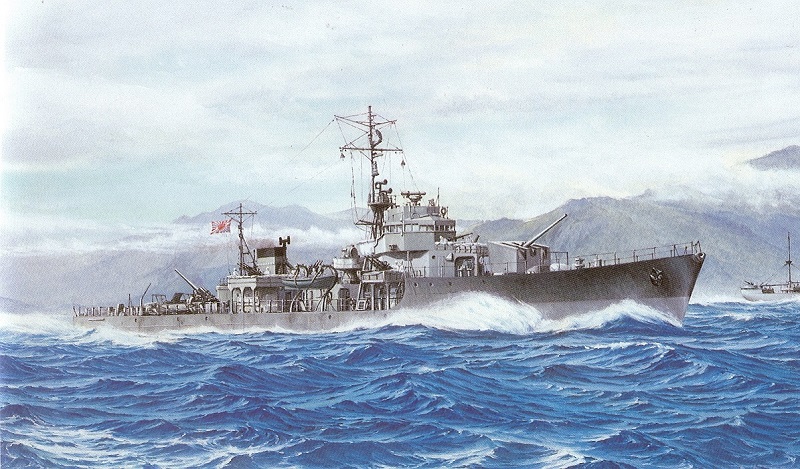© 2009-2011 Bob Hackett, Sander Kingsepp and Peter Cundall
22 November 1944:
Osaka. Laid down at Niigata Iron Works, Ltd.
26 March 1945:
Launched and numbered CD-225.
28 May 1945:
Completed and registered in the IJN.
26 July 1945:
Nanao Bay. Light cruiser KASHIMA supplies 90t heavy oil.
15 August 1945:
Japan accepts the Allies “Potsdam Declaration” (of unconditional surrender) and hostilities cease.
5 October 1945:
Removed from the Navy List.
12 October 1945:
Departs Sasebo on her first repatriation voyage.
19 October 1945:
Arrives at Manila. Embarks troops and passengers to be repatriated and departs later that day.
23 October 1945:
Arrives at Davao. Embarks troops and passengers to be repatriated and departs later that day.
28 October 1945:
Arrives at Tacloban. Embarks troops and passengers to be repatriated and departs later that day.
3 November 1945:
Arrives at Kagoshima. Disembarks troops and passengers.
1 December 1945:
CD-225 is officially assigned to the Allied Repatriation Service. [1]
6 December 1945:
Departs Kure.
13 December 1945:
Arrives at Manila. Embarks troops and passengers to be repatriated and departs later that same day.
22 December 1946:
Arrives at Otaka. Disembarks troops and passengers.
26 December 1945:
Enters dockyard at Kure for repairs.
10 January 1946:
Repairs are completed, but CD-225 is laid up for lack of spares.
30 April 1948:
Scrapped by Amakisa Kaiji.
Authors' Note:
[1] Allied occupation forces were responsible for the return of six million Japanese military personnel and civilians from Japan's defunct far-flung Empire. In addition, there were over a million Korean and about 40,000 Chinese prisoners and conscript laborers and approximately 7,000 Formosans and 15,000 Ryukyu Islanders to be repatriated.
Some Allied and many former IJN warships, from aircraft carriers to kaibokan, were used to facilitate the enormous repatriation effort. Japanese vessels and crews were used to the fullest extent possible to conserve Allied manpower and accelerate demobilization. Each ex-IJN ship first had to be demilitarized; guns removed or, in the case of large warships, barrels severed, ammunition landed, and radar and catapults removed, if fitted. Repatriation of the Chinese on Japanese ships began early in October from Hakata, but U.S. guard detachments had to be placed on many ships to prevent disorder because the Japanese crews could not control the returnees.
Japanese-run repatriation centers were established at Kagoshima, Hario near Sasebo, and Hakata near Fukuoka. Other reception centers were established and operated at Maizuru, Shimonoseki, Sasebo, Senzaki, Kure, Uraga, Yokohama, Moji and Hakodate. Allied line and medical personnel supervised the centers. Incoming Japanese were sprayed with DDT, examined and inoculated for typhus and smallpox, provided with food, and transported to his final destination in Japan.
Thanks go to Dr. Higuchi Tatsuhiro of Japan.
-Bob Hackett, Sander Kingsepp and Peter Cundall
Back to
Escort Page



